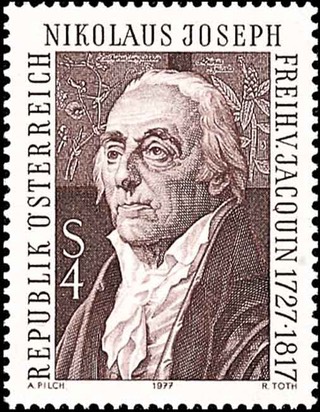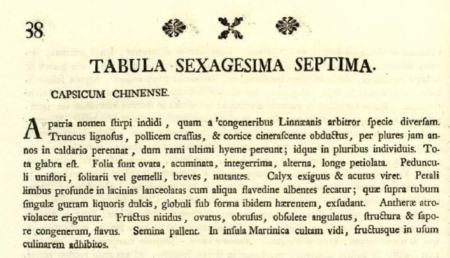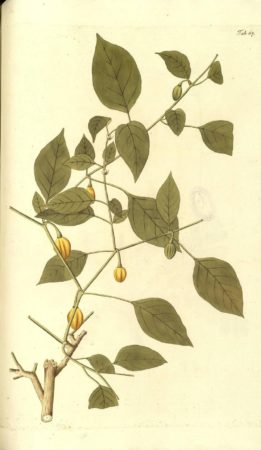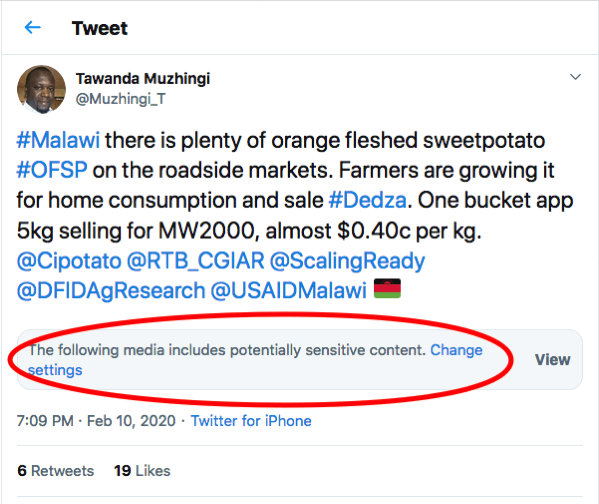I was recently reminded of a post I wrote in 2006, and thought to myself that it could have been written yesterday. The trigger for this memory was a long piece in the New York Times that appeared more or less yesterday.
The subject is superweeds; that is, weeds resistant to one or more herbicides. In 2006, I was writing about waterhemp (Amaranthus tuberculatus), which had recently been shown to have developed resistance to an entire class of weedkillers. The thrust of it was that resistance involved mutations in two separate genes, taken together a one in a billion billion (1,000,000,000,000,000,000) chance. But it happened. Agriculture selects improbable events.
The NYT article was about another amaranth, Palmer amaranth (A. palmeri). The thrust of it was that Palmer amaranth is now resistant to at least six different classes of herbicide. In 2006 it was resistant only to glyphosate. That leaves farmers with almost no options to control Palmer amaranth, and control it they must.
In 2008, researchers scattered 20,000 seeds of glyphosate-resistant Palmer amaranth into a 1 metre diameter circle in the middle of four different cotton fields that had no history of Palmer amaranth. The experimental sowing was intended to represent survival and maturity in the field of a single resistant female Palmer amaranth plant. After that, they managed the glyphosate-resistant cotton as per recommendations, spraying to control the weeds.
One year later, in one of the fields, Palmer amaranth had moved 114 m from the original site in one of the fields. Two years later, the weed had spread to the boundaries of all the fields and covered 20% of the field area. “Three years after the introduction (2010), Palmer amaranth infested 95 to 100% of the area in all fields, resulting in complete crop loss since it was impossible to harvest the crop.”
That paper goes on to discuss some possible management options, suggesting a “zero-tolerance threshold” to eradicate every weed. I doubt anyone even tried. For its part Monsanto, which had developed glyphosate-resistant seeds, worked to stack resistance to another weedkiller — dicamba — into its genetically engineered seeds, a pointless exercise. As the NYT reports, “The agribusiness giant took a decade to develop that product line. The weeds caught up in five years.”
A squandered resource
The evolution of resistance to some life-threatening challenge is axiomatic in biology and it doesn’t matter whether the threat is an antibiotic, a herbicide, fungicide or insecticide, or even a predator. Anything that gives an organism even the slightest competitive edge in its ability to reproduce will in the end be selected. The problem is certainly not unique to genetically modified organisms. In the mid 1990s, wild oats resistant to three and four classes of weedkiller appeared on the Canadian prairies. Agriculture Canada blamed farmers who ignored advice to rotate crops and herbicides. But genetic engineering has exacerbated the problem many times over by giving natural selection so many more opportunities to do its inexorable thing.
Antimicrobial resistance is, belatedly, gaining a little recognition. Herbicide resistance might just be heading in the same direction, if the New York Times is taking an interest. These problems are, to some extent, a manifestation of a mismanaged commons; to begin with, using the stuff confers a benefit on the individual, but as everyone does so, everyone begins to suffer. In agriculture, they’re also a reflection on efficiency at any cost. Good weed control means good preparation of the soilbed, physical weeding three or four times during the life of the crop and other practices that take time and, therefor, money. How much easier to pay over the odds for seeds, buy weedkillers from the people who lent you the seeds, spray and pray. The same goes for antibiotics as growth promotors. Shave a fraction of a percent off feed costs and multiply that across millions of animals and you create a powerful incentive to abuse antibiotics. And just as it isn’t genetic engineering per se that creates problems of resistance, it isn’t agriculture per se that makes the improbable certain. It is the way agriculture is conducted.
What to do
Scientists have offered lots of advice on how to minimise the problems of resistance, some of which have even made it into policy. Just recently, the Food and Drug Administration tightened up a bit on its Guidance for Industry on the use of antibiotics on farms. From June 2023, a veterinary prescription will be needed for all antibiotics. I’m sure no veterinarians will be tempted to issue prescriptions that might not be absolutely necessary.
As it happens, organic farmers don’t use chemical herbicides on their crops, and superweeds are much less prevalent on organic farms. An excellent long article in Civil Eats uses one organic farmer’s fight against glyphosate-resistant giant ragweed as a jumping off point for a thorough discussion of the difficulties of controlling weeds in the oversimplified farm systems of the US corn belt. The key is hybrid rye, which overwinters and helps to smother ragweed as it emerges in the spring. Control can be achieved, but as the article makes clear, there are lots of obstacles, not least the difficulty of finding uses for hybrid rye. Longer rotations, increased diversity, more hands-on management, local cooperation: all are necessary, and all go against the grain for the majority of today’s corn belt farmers. Nevertheless, something is going to have to happen, and another technical fix is unlikely to be any kind of solution.
If you can’t beat them …
There is an additional approach, at least for Palmer amaranth. Its leaves, stems and, especially, seeds are edible, delicious, and highly nutritious (as they are for many amaranths). In theory, one could, perhaps, turn the noxious weed into a nutritious addition to the diet. And even though it is glyphosate resistant (not to mention the other five weedkiller classes), it come by that resistance natural, rather than through meddlesome genetic engineering, so there couldn’t possibly be any objection to eating it.
The two articles, in the New York Times and Civil Eats, are well worth reading in their entirety.
If you listened to my podcast How the chilli pepper conquered China, you may be wondering, if you care about these things as I do, why there is a chilli species called Capsicum chinense.
The chilli didn’t reach China until the 1570s or thereabouts, and capsicums in the wild are restricted to the Americas, yet C. chinense is a perfectly valid species name. Indeed, many of the hottest peppers in the world have the distinction of belonging to that species, which also includes the more familiar Habanero and Scotch Bonnet varieties.
 Start searching, and you learn that the species was described and named by Nikolaus Joseph von Jacquin in 1776. He was a Dutch scientist who ended up working for the Austrian crown and undertook an impressive early collecting trip in the Caribbean. Von Jacquin’s family was highly regarded in Vienna, where Mozart taught his daughter piano and wrote songs for his son. He was also one of the earliest promoters of the Linnean system of binomial nomenclature, and enjoyed a long friendship and correspondence with Linnaeus.
Start searching, and you learn that the species was described and named by Nikolaus Joseph von Jacquin in 1776. He was a Dutch scientist who ended up working for the Austrian crown and undertook an impressive early collecting trip in the Caribbean. Von Jacquin’s family was highly regarded in Vienna, where Mozart taught his daughter piano and wrote songs for his son. He was also one of the earliest promoters of the Linnean system of binomial nomenclature, and enjoyed a long friendship and correspondence with Linnaeus.
A most difficult taxonomic morass
There are five domesticated species of Capsicum (and some hybrids) and three of them — C. annuum (by far the most common), C. frutescens (Tabasco, and not a lot else) and C. chinense — are not easy to tell apart. Most descriptions focus on the number of flowers that grow from the base of each leaf, 2–5 in chinense as opposed to only a single flower in annuum. The three interbreed to varying extents and back in 1993 one expert said their classification “has been and continues to be a most difficult taxonomic morass”. Modern molecular methods back that up; the three arise from a single ancestor and are one another’s closest relatives.

Von Jacquin’s description does not say why he thought it was from China. It does say, roughly, “I saw [them] cultivated on the island of Martinique, and seeds used in cooking.”

Von Jacquin seems to have described a cultivated variety growing the gardens of Schönbrunn Palace outside Vienna. Almost 200 years later, the species was identified in the wild
Paul Smith and Charles B. Heiser Jr did an exhaustive study of wild and weedy capsicums from all over, in the course of which they found that some plants from Central and South America did not fit into any of the species they had previously recognised. Though it apparently piqued them to admit it, these plants clearly belonged to what they called Capsicum sinense.
Smith and Heiser offered an “emended” description that places special emphasis on the 3–5 flowers at each node and a marked constriction at the base of the calyx. They then say:
It is unfortunate that the earliest name for this American plant appears to be Jacques’ [sic] C. sinense (as “chinense”). The plant shown in his plate, although showing only two pedicels at the nodes is almost identical to some of our collections. Our Ac. 751 (P.I. 157,062) from Lanchow, China, is a fairly close match and it in turn is almost indistinguishable from a line (Ac. 910) from Costa Rica.
I see only one pedicel at the nodes in von Jacquin’s plate, above. Maybe Smith and Heiser were looking at a different one. In any case, I quite like the fact that von Jacquin, who worked to promote Linnean binomials, gets the last laugh because he got the first name. Did the plants he described come from China? He must have thought so.
Wikipedia’s view is that von Jacquin "believed they originated in China due to their prevalence in Chinese cuisine after their introduction by European explorers,” and it cites a chapter by Paul Bosland in support. Chastened by the whole spinach thing, I checked.
Bosland says “the French taxonomist who named this species in 1776 got his seed from China”. Leave aside that von Jacquin was born in The Netherlands and working in Austria at the time; what is Bosland’s source? None other than Smith and Heiser (1957).
And they say absolutely nothing about the source of von Jacquin’s seeds.
The mystery, then, abides. Maybe someone with access to the archives at Schönbrunn Palace or the University of Vienna botanical gardens could take a quick poke around and see if there is any indication of the geographical origin of the plants that von Jacquin named Capsicum chinense.
When one is seeking statistical information about a crop like, say, cassava, it is so rewarding to see a notice like this:
Statistics for cassava are extremely important for a variety of scientists, developers, economists, bankers, investors, policy makers and more.
Alas, like cassava itself, which starts to decompose almost as soon as it has been harvested, becoming unusable within 72 hours, the site that offers this validation appears to be suffering its own special form of post harvest physiological deterioration.
Go to the Cassava Statistics page of the grandiose Global Cassava Partnership for the 21st Century and you will discover that there is absolutely nothing of value there. Things that look like maybe, just perhaps, they could be links are not even broken links, although the site promises that they are:
For the convenience of the users we provide excel sheets and ppt presentations that have been organized in different ways (see above), to generate information that can be used readily.
Of course the actual statistics are from elsewhere, the FAO, no less. But FAOstat has been missing in action for as long as I can remember.
My point, though, is not just to hurl brickbats at the Global Cassava Partnership for the 21st Century, ((Which, last time I looked, was less than one-fifth finished.)) not even for raising false hopes in me. It is to make the larger point that whenever these time-limited projects end, the online presence that they are so keen to launch at the start, slowly rots away. Very seldom is any thought (or support) given to maintaining their value. Maybe that’s because they have no value, but in that case, why not just give them a decent burial and be done with it?
I believe they may well have value, as an historical record if nothing else, as a source of lessons to be learned, perhaps, from mistakes made.
Now, in the specific case of GCP21 I combed through the website and didn’t actually find anything worth putting on life support, but it doesn’t look as if that was ever any part of a strategic decision, and it could have been. The Generation Challenge Programme, a similar beast, thoughtfully preserved most of its achievements in a website that, as far as I can tell, still works very well.
Every time-based project should plan for its end; kill it, or preserve it, but please don’t just let it rot away.
Oh, Twitter, you’re such a tease.
Knowing that I am currently working on orange-fleshed sweetpotatoes, Luigi kindly sent me a link to a tweet. This one:

That red ellipse? I’m drawing your attention to Twitter’s warning that seeing the images might bring on an attack of the vapours in highly-attuned personalities.
Is it just the word “fleshed”? I had to know.

I dunno. “Filth,” they say, “is in the mind of the beholder” and I have to say, I’m not seeing it.
Orange-flesh, though. Where else have I seen that? Maybe that’s what Twitter is trying to warn me against.
No matter. Congratulations to @CIPotato and @RTB_CGIAR.
 Start searching, and you learn that the species was described and named by Nikolaus Joseph von Jacquin in 1776. He was a Dutch scientist who ended up working for the Austrian crown and undertook an impressive early collecting trip in the Caribbean. Von Jacquin’s family was highly regarded in Vienna, where Mozart taught his daughter piano and wrote songs for his son. He was also one of the earliest promoters of the Linnean system of binomial nomenclature, and enjoyed a long friendship and correspondence with Linnaeus.
Start searching, and you learn that the species was described and named by Nikolaus Joseph von Jacquin in 1776. He was a Dutch scientist who ended up working for the Austrian crown and undertook an impressive early collecting trip in the Caribbean. Von Jacquin’s family was highly regarded in Vienna, where Mozart taught his daughter piano and wrote songs for his son. He was also one of the earliest promoters of the Linnean system of binomial nomenclature, and enjoyed a long friendship and correspondence with Linnaeus.


